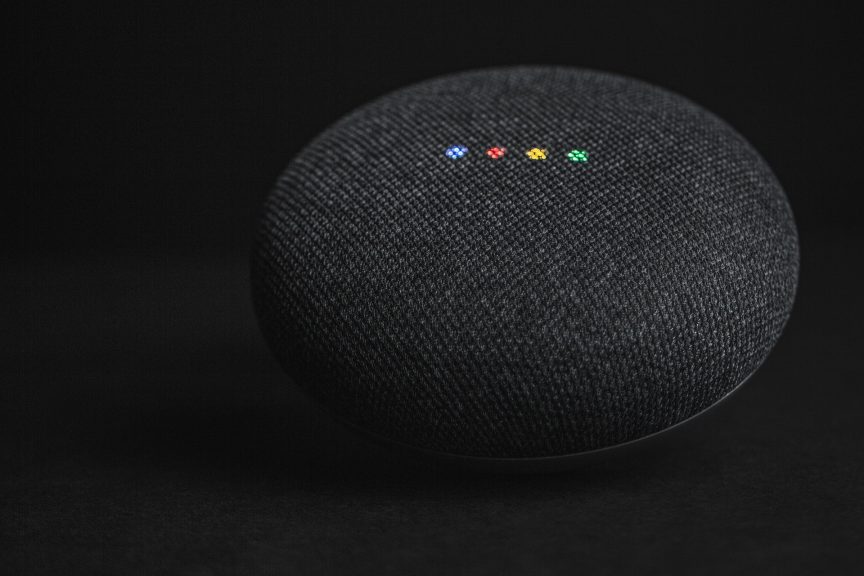
(*Linked or embedded content may have been removed or be unavailable.)
It wasn’t long ago that voice activation technology felt more like science fiction than Sunday chores. But nowadays, calling up your favorite vacuuming playlist or requesting a reminder to buy cleaner is more mundane and less Minority Report.
That’s a big opportunity for businesses across multiple verticals. But it’s also a reminder that localization services are a vital partner for said businesses. After all, what good is voice technology if it’s not natural or intuitive to use? It’s not just about providing a good user experience, either. Effective voice technology optimization gives businesses a competitive edge to make their products and services easily discoverable and marketable. The key to unlocking those advantages is local knowledge, technical sophistication, and linguistic mastery—qualities that your qualified language service provider (LSP) brings to the table.
Contents
Voice search optimization and apps
What does that look like in practice? Well, let’s say you’re building an app for your business. As the ShyftUp Blog observes, the first step is to optimize speed and performance—universal metrics when creating easy-to-use and enjoyable software. But when it comes to implementing voice commands, they recommend finding a speech recognition API suitable for your needs, be it Google Cloud Speech-to-Text, Microsoft Azure Speech, or another option. Then it’s a matter of building the functionality into your app and tying commands to app functions while constantly updating and iterating for errors and new functionality.
But voice optimization goes beyond app building. It’s also essential for product and service discovery. And for your business to be discoverable, you have to speak the language, so to speak, or else onboard someone who does. For instance, if you’re competing for business in India, do you know the terms that drive business your direction? Do you understand how they differ based on language, dialect, cultural inclinations, and other social sensitivities? That’s where a qualified localization partner comes in.

Voice search optimization and content
As the Medium blog Audio Bridge observes, those are just a few considerations when localizing business operations for foreign-language markets. It’s not only a better and more natural user experience; it also highlights the content and products or services you want to promote. And while an excellent user experience is a great start, a knowledgeable approach to cultural sensitivities is a must.
Audio Bridge recommends structuring content with an eye toward ease of use, making liberal use of bullet points and short, snappy answers to common questions. A major factor in driving traffic your direction is an understanding of the conversational language natural to local residents, as well as identifying high-impact keywords in the targeted locality. That also includes long-tail keywords — “longer, more particular phrases that consumers are likely to employ in conversation” — to further boost your leverage.
“Long-tail keywords typically have lesser competition than the primary and secondary ones, which allows smaller firms to compete effectively in voice search results, and more likely to promote your content to users,” Audio Bridge reports.
According to NMQ Digital blog, FAQs are another consumer-friendly tool that can aid your voice-enhanced outreach. That’s because voice searches, especially those phrased as questions, often pull responses directly from FAQs.
“By anticipating and addressing common queries related to your business or industry, you not only enhance the likelihood of your content being selected by voice-activated devices but also cater to the conversational nature of voice searches,” Busra Cildas of NMQ Digital writes. It’s another arena where an expert’s regional knowledge and anticipation of common queries pays dividends. That know-how pushes increased SEO and voice search results toward your business, making it effective for both customer engagement and marketing.
What else needs to be localized?
Think about every consumer-facing asset and piece of content in your portfolio. Then prioritize accordingly. But remember: It’s not enough to pass a website through a translation machine and call it a day. To fully leverage voice technology, you need to match the conversational style of your market. Consider creating bespoke content for the target market with a brand identity, language, information and addresses crafted to look and feel local.
Even one oversight can break that experience, so consistency is everything. Scour your social media, blogs, and other content that voice assistants utilize to unify it with your broader strategy. Localized reviews, for instance, engage customers and move products but also hit that voice-search sweet spot. While crafting a localized, voice technology-friendly style is easier said than done, it’s just another day’s work for a qualified linguist. Partner with an LSP that reflects the living languages of your target market — from unique pronunciation, idioms and slang, to their cultural sensitivities and preferences. It’s a relatively small investment that pays dividends over time.





